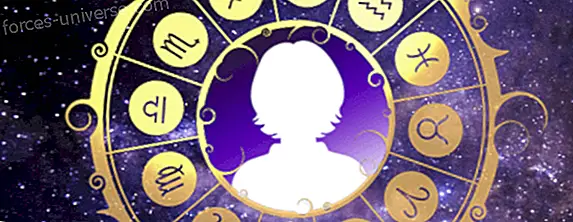
They were born thousands of years ago and have been the fundamental basis of universal history and the advances of the society in which we live today. From the ancient civilizations, the best inventions, writing, commerce and, in fact, have been born, many aspects of this century still retain part of what these empires were, such as social structure, monuments and constructions .
On this occasion, we will know in depth one of the greatest ancient civilizations and empires that have existed on the face of the earth, it is the Roman Empire .
Ancient Rome was the cradle of Christianity and civil law, and contributed to the development of literature, architecture and language in the Western world. His social structure named the emperor as his highest figure and was a lifelong position and he had an almost omnipotent power.
History of ancient civilizations, the Roman Empire
This important empire, unique among ancient civilizations, arose from a small agricultural community created on the shores of the Mediterranean Sea in the 753 century BC, according to tradition. After being a monarchy ruled by the Kings and a republic ruled by the consuls, in 27 BC it became one of the greatest empires in the ancient world.
Roman Pax, which means 'Roman peace', was the period of greatest splendor of this culture, thanks to the great order, economic prosperity and security that existed under the dynasty of the Antonines, which ruled from the year 96 to 192 AD Although the called Golden Age in the West and the awakening of the East was lived under the monarchy of the Severos, who ruled from 193 to 235 AD
In its time, the Romans came to dominate from Britain to the Sahara desert and from the Iberian Peninsula to the Euphrates.
According to the Universal History Encyclopedia, a series of socio-political factors caused the decline of the empire, which was divided into two. The western half, called the Roman Empire of the West, where Hispania, Gaul and Italy were included, finally collapsed in the fifth century and gave rise to several independent kingdoms;
While the eastern half, called the Roman Empire of the East, ruled the eastern part of the empire of Rome from Constantinople. This empire is also called by modern historians as Byzantine Empire from AD 476, the traditional date of the fall of Rome that marks the beginning of the Middle Ages.

The arts in the Roman Empire
The Romans were great builders and left a great legacy in the way of creating their buildings, characterized by the use of columns and capitals. Temples, amphitheaters, palaces, circuses, photos, basilicas, premises of administration of justice, aqueducts or tombs, are some of the constructions made during the Roman Empire and which are still almost intact today.
For the construction of its buildings, higher and more harmonious than those of the Greeks, this civilization used materials such as stone, brick and concrete . Among the main architectural monuments of Rome, stand out the Pantheon of Rome, destined for all the gods, or the temple of Vesta, built in a circular way.
The amphitheaters and circuses were large spaces built to provide spectacles to the people, with a arena of gladiatorial fighting and fighting between wild beasts and Christians. The most important were the Roman Colosseum, with the capacity to host up to 110 thousand spectators, and the Circus Maximus .
There were also hot springs, which was a set of buildings with hot or cold water baths and also included meeting and concert rooms. The most famous were the Baths of Caracalla and those of Diocletian, in Rome.
Another characteristic of the constructions of the Roman civilization were the realistic full-length sculptures or portraits only of the bust .

Religion in the Roman Empire
Every aspect of the life of the Romans involved religion. This was one of the ancient civilizations that the gods worshiped, that they believed that the tributes made through the practices of their worship the gods paid back with their protection, favor and special concessions.
The Romans had a religion similar to that of the Greeks, characterized by being polytheists, that is, who believed in many gods, and anthropomorphic. Each month was dedicated to a divinity, there are holidays for each god, being the most revered:
J piter, god of heaven and celestial phenomena. It was called Optimus Maximus, which means the best and the greatest became the patron deity of Rome and assumed a central place in the religious life of the city.
Mars, god of the army.
Juno, god of city gates and housing.
Juno, patron goddess of women and protector of mothers.
Ceres, goddess of the harvest.
Diana, goddess of wild nature and hunting.
Minerva, goddess of wisdom, arts and war techniques, as well as protector of Rome and patron saint of artisans.
Mercury, god of commerce.
Venus, goddess of beauty, fertility and love.
Vulcan, god of fire, metals and blacksmiths.
Neptune, god of the sea.
There were two kinds of cults to their gods, the public and the private . The first was celebrated by private priests in each temple according to the god, and in the name of the city.
The private, more personal and intimate cult was administered by the parents in their homes and was intended for the family gods, which were:
The Manes or souls of the ancestors, who watched over the continuity and prosperity of their descendants.
The Lares or gods protecting the home
The Penates or geniuses that made possible the family supply.

The culture in the Roman Empire
During the Roman Empire, crafts were developed, especially ceramics and glass, which were worked for commercialization.
In the large estates, in which a large number of slaves worked, they cultivated cereals, vines, olive, vegetables and fruits, bases of Roman agriculture, although in the high imperial era (1st and 2nd centuries), the cessation of the wars of conquest caused the shortage of slaves and many owners had to resort to free settlers who received land for rent.
The coins that circulated in civilization were the ace of copper, the denarius and sestercio of silver and the golden aura.
AUTHOR: Gysell Cobos, editor of the big family hermandadblanca.org






